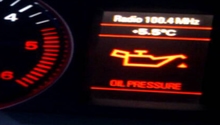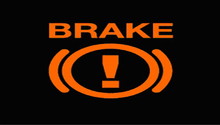Audi: Warning Lights
Keep reading to learn what the warning lights on the dashboard of your Audi really mean and what you'll need to do if any start to flash.
This article applies to the Audi A3, A4 B7/B8, A6 C5/C6, Q5/Q7.
There are a number of reasons why a warning light might appear on the dashboard of your Audi. The most likely reason, however, is that a component is malfunctioning or is in need of additional fluid or a new filter. While you might be tempted to ignore such warnings, it's highly recommended that you don't. Getting ahead of a mechanical or electrical problem could save your hundreds, if not thousands, of dollars in the long run. Here is a rundown of the warning lights that could display on the dashboard of your Audi and what they mean.
Warning Lights
Electronic Power Control (EPC)
The EPC and check engine light might display on your dashboard simultaneously, in which case the most likely culprit is a loose electrical connection or a faulty sensor (e.g., crankshaft position sensor or camshaft shift sensor). Your Audi will go into "limp" mode to protect itself from damage. Expect your car to travel more slowly, as its computer will restrict it from going too fast or reaching too many revolutions per minute (RPM). See your dealer or run your codes and replace the faulty sensor, as needed.

Steering Warning Light
You might need to have your steering wheel software updated. There could also be a problem with your motor. Run your codes and update your steering wheel software, as recommended by Audi.

Headlight Range Control Light
If the headlight range control defective warning light appears on your dashboard, then the issue is most likely a light problem versus a sensor problem. Audi owners who installed adaptive Xenons on their vehicles noticed that when one of the headlights failed to "adapt" or work at night, their headlight warning light kicked on. In this case, you need to get the light cleared with VAG-COM.

Common Questions
Are there tools to turn off service warning lights?
To turn off a service warning light, you can either purchase the specialized equipment needed to do so, including the necessary software (if applicable), or ask your local dealer to turn off the service warning light for you. In most cases, the dealer will almost always insist upon you having the recommended service work done before agreeing to reset your VAG-COM Diagnostic System, the system that controls your warning lights.
Why did my brake pad warning light come on?
Your brake pads are likely run down. Keep in mind, however, the warning light will display long before any damage to your rotors has occurred. OEM pads will have a sensor already built into them.
Why does my traction control warning light come on?
Your tires could be worn down, causing slippage. To prevent a collision, your Audi may automatically engage your electronic stability control (ESC) control, which controls traction. If your anti-lock brake system is damaged or malfunctioning due to a faulty sensor, you will need to make that repair before the light disappears from your dashboard. As a quick fix, try disconnecting and reconnecting your battery for 30 seconds.
Common Issues
Oil Pressure Sensor
If your oil pressure warning light goes off but your engine oil is clean and topped up, the issue could be a faulty oil pressure sensor. At only $15 (parts cost), this is an easy do-it-yourself repair. Be sure your engine oil is not the problem, however. You don't want to destroy your engine.
Loss of Power
A number of issues could be at play, including bad fuel, rust in the fuel line, or a faulty sensor (e.g., dirty oxygen sensor). Your coolant system may also need to be flushed.
Re-ground Wires
If you receive a 'bulb out' warning light, then you might have a blown bulb or one that has been incorrectly installed (the bulb itself may be wrong). If changing the bulb(s) doesn't fix the problem, you might need to re-ground the wires in your instrument cluster. Only attempt this repair if you are skilled in wiring.
Related Discussions
- Check Engine Light - Audiworld.com
- Headlight Range Defective Light - Audiworld.com






